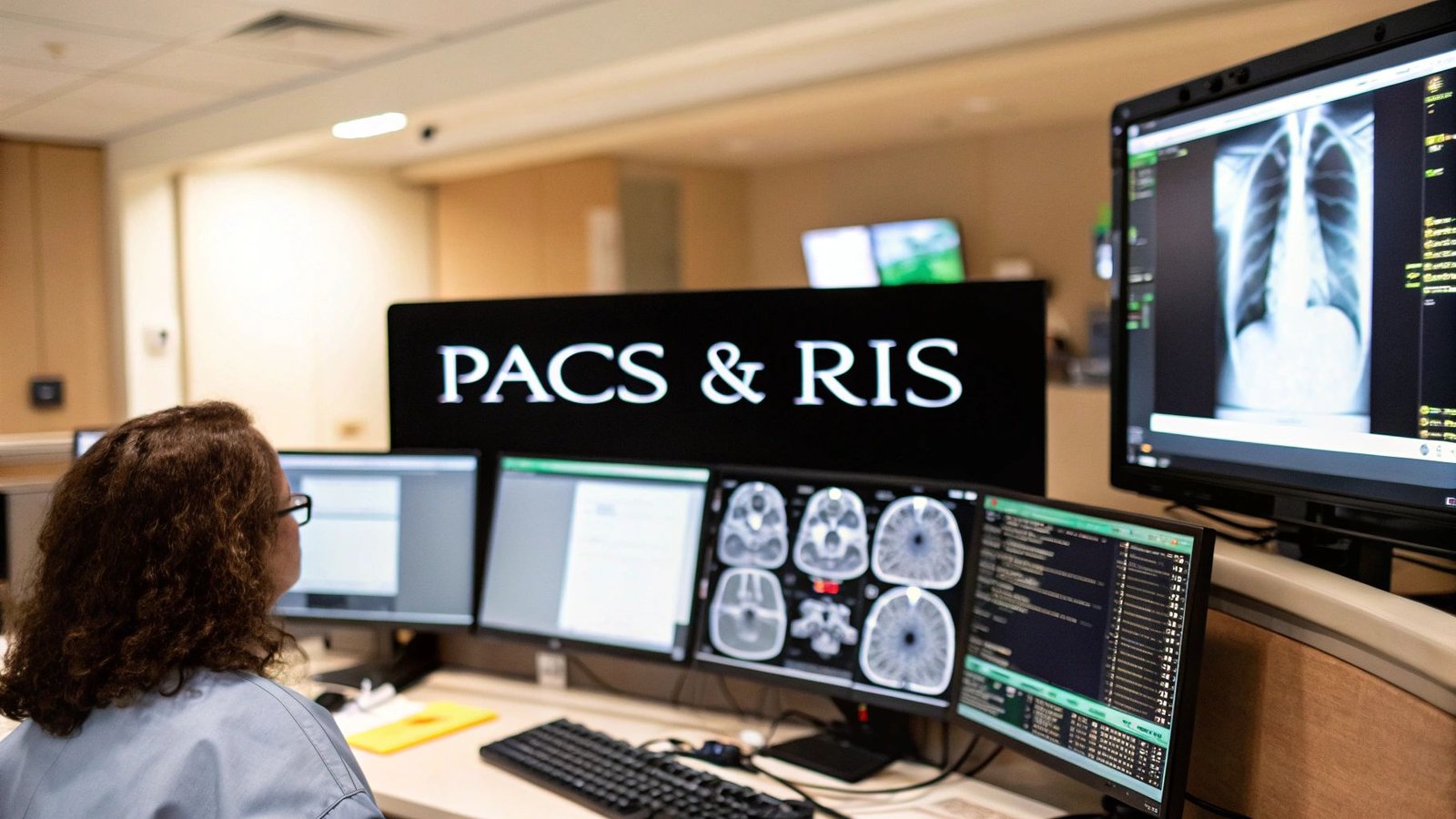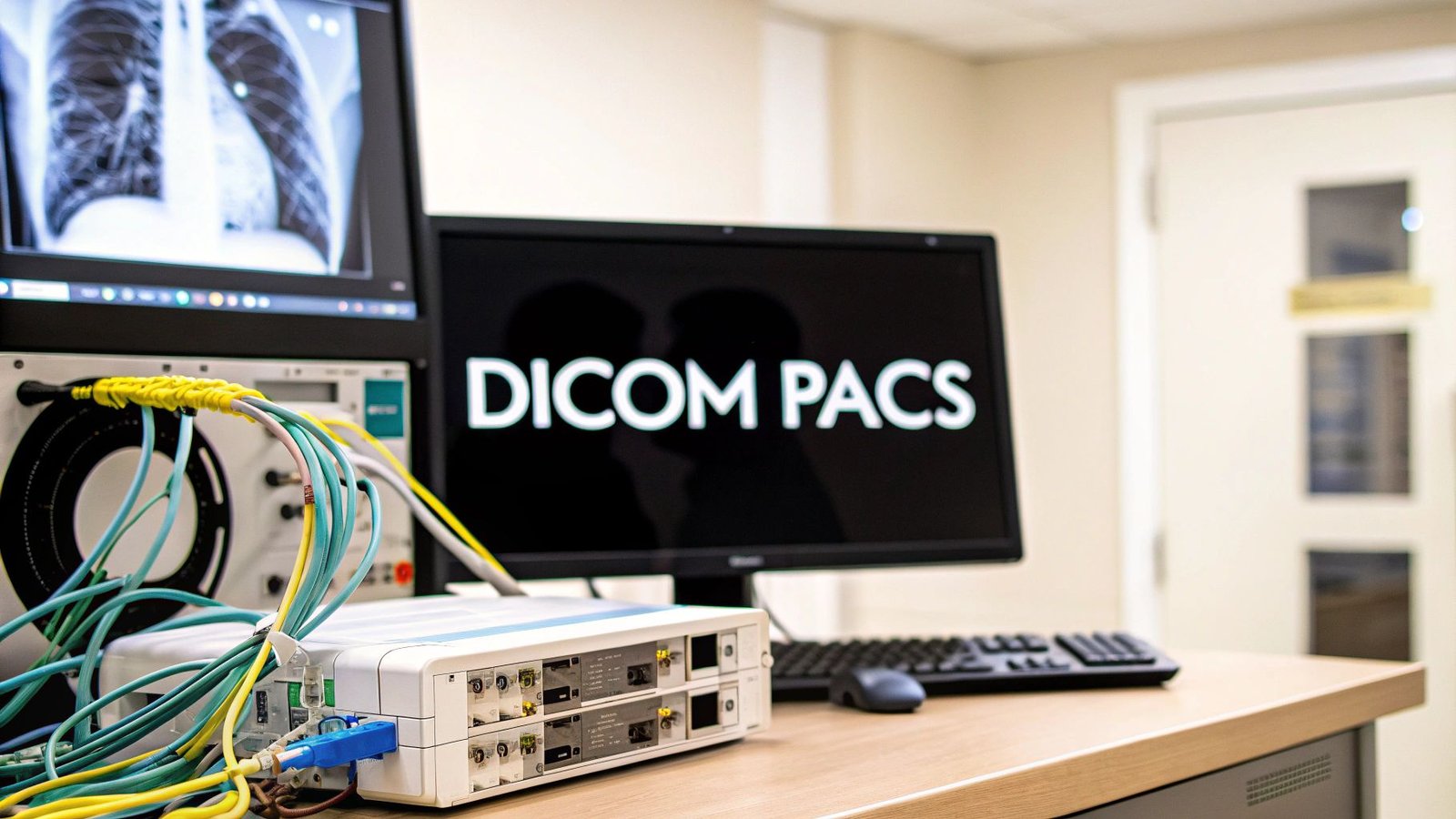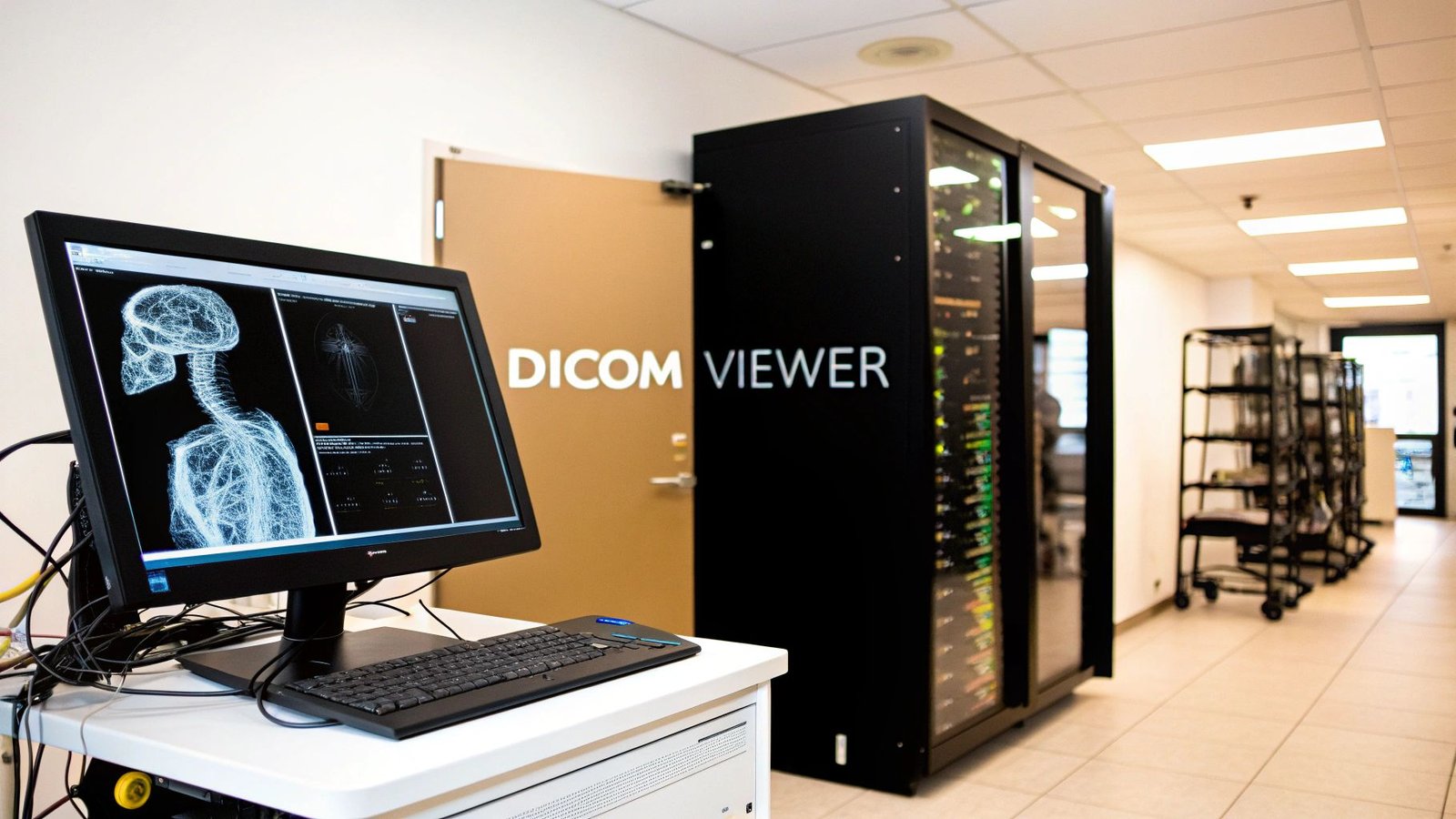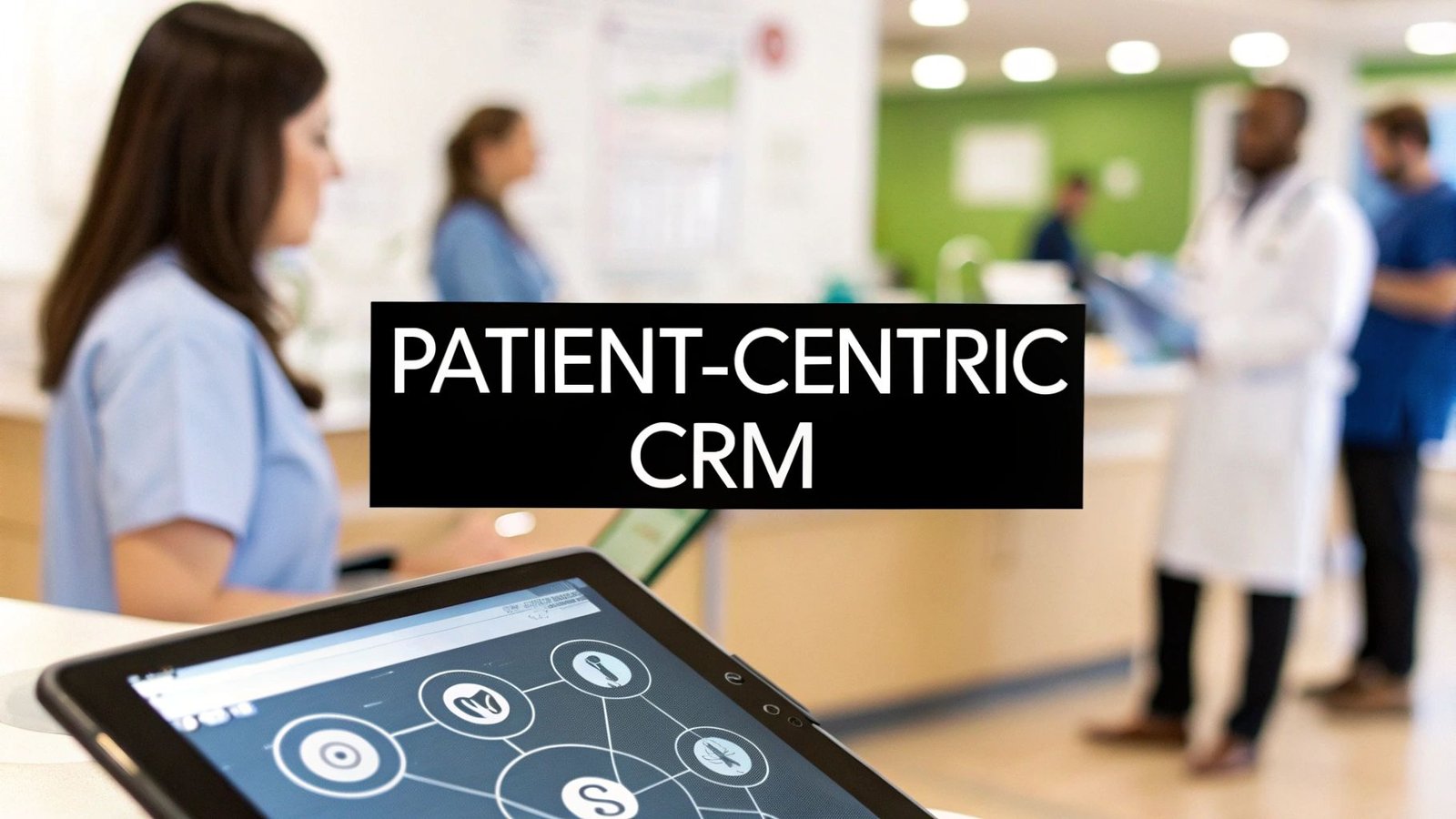The Evolution of Artificial Intelligence Diagnostics
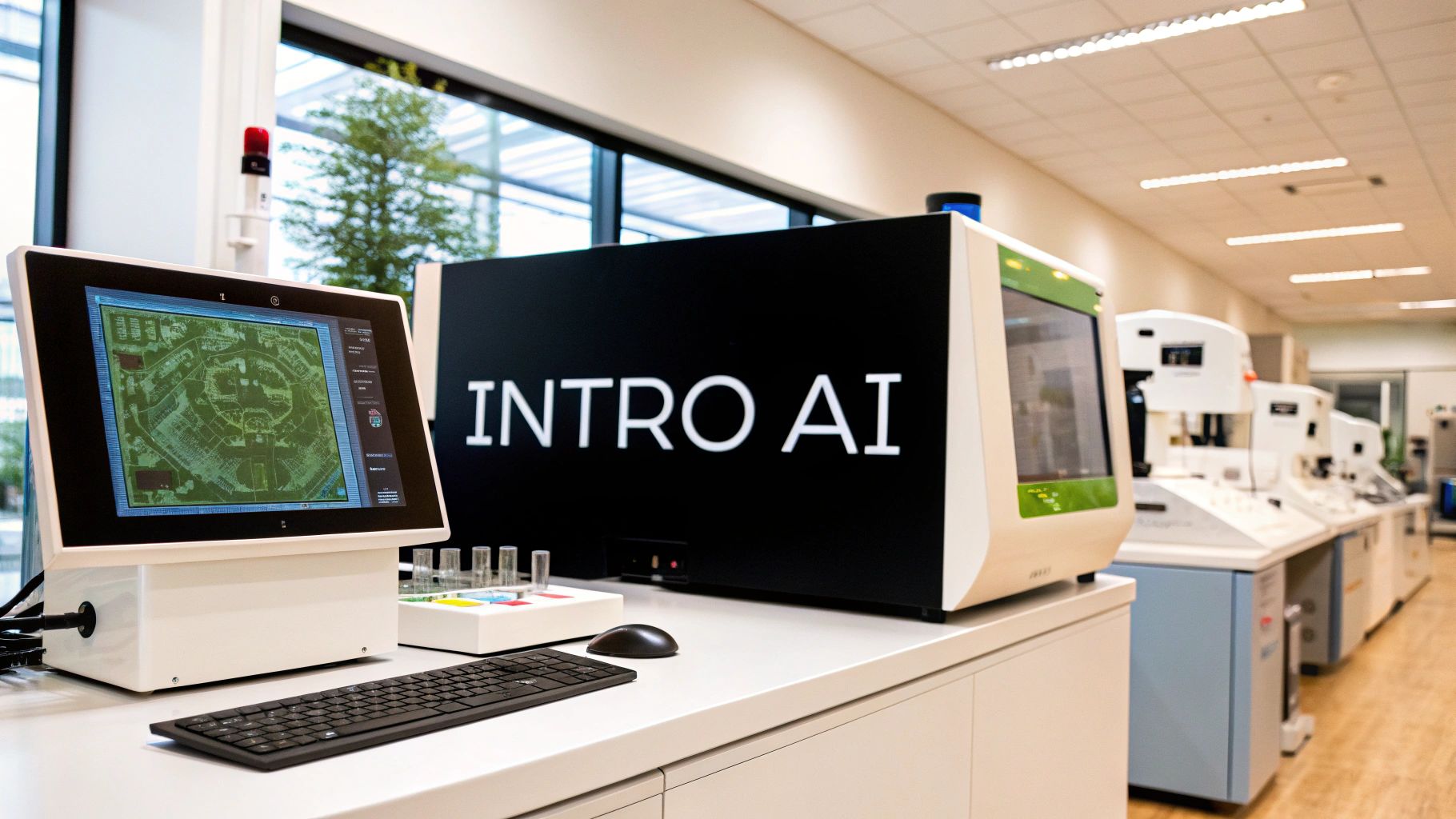
The journey of artificial intelligence in diagnostics is a fascinating story of progress. From its initial conception to its current advanced applications, AI has steadily reshaped medical decision-making. The field has moved from relying solely on human expertise to a collaborative partnership with intelligent machines. This evolution presents both opportunities and challenges.
Early Stages: Rule-Based Systems and Expert Knowledge
The story begins in the 1970s with rule-based systems like INTERNIST-1 and MYCIN. These systems, though basic by today's standards, were innovative for their time. INTERNIST-1, developed in 1971, used a search algorithm to match patient symptoms with diagnoses. This marked an early attempt to automate the diagnostic process.
MYCIN, another pioneering system, focused on identifying bacteria causing infections and recommending antibiotics. These early efforts highlighted AI’s potential in healthcare, prompting further research. Learn more about early AI diagnostic systems.
These early successes laid the groundwork for today’s AI tools. Modern systems can analyze complex medical data, helping professionals make more accurate diagnoses.
To illustrate the progress of AI in diagnostics, let’s examine a timeline of key systems and their applications.
The table below, "Evolution of AI Diagnostic Systems," shows the progression over the decades. It highlights the key systems, their technological approach, and clinical uses.
| Era | Key Systems | Technological Approach | Clinical Applications |
|---|---|---|---|
| 1970s | INTERNIST-1, MYCIN | Rule-based systems, expert knowledge | Internal medicine, infectious diseases |
| 1980s-1990s | DXplain, QMR | Bayesian networks, decision support | General diagnosis, clinical decision making |
| 2000s | IBM Watson | Machine learning, natural language processing | Oncology, drug discovery |
| 2010s-Present | Deep learning algorithms | Deep learning, image recognition | Radiology, pathology, dermatology |
This table demonstrates the significant advancements in AI diagnostic systems. From rule-based beginnings to the sophisticated deep learning models of today, the field has seen remarkable growth. The clinical applications have also broadened considerably, impacting numerous medical specialties.
The Rise of Machine Learning: Data-Driven Diagnostics
The next significant advancement arrived with machine learning. This approach shifted the focus from pre-defined rules to learning directly from data. Algorithms were trained on vast medical image datasets, patient records, and genomic data. This enabled them to identify patterns and make increasingly accurate predictions. Systems like IBM Watson showcased AI’s power in processing and analyzing complex medical information.
Deep Learning and the Future of AI Diagnostics
The most recent progress in AI diagnostics is fueled by deep learning. This subfield of machine learning uses artificial neural networks with multiple layers. These networks learn complex patterns from data, improving image recognition, natural language processing, and predictive modeling.
For instance, deep learning algorithms now detect subtle anomalies in medical images that might be missed by the human eye. This has significant implications for transparency and accountability in AI diagnostics. The future of compliance management is evolving rapidly, influenced by AI and automation: AI, Automation, and Compliance.
Today, AI diagnostics are expanding rapidly across medical specialties. From radiology and pathology to cardiology and dermatology, these tools are enhancing medical care. Ongoing research aims to improve the accuracy, reliability, and accessibility of these tools. The future holds immense promise for even more advanced AI systems that will continue to reshape healthcare.
Inside The Black Box: How Artificial Intelligence Diagnostics Works
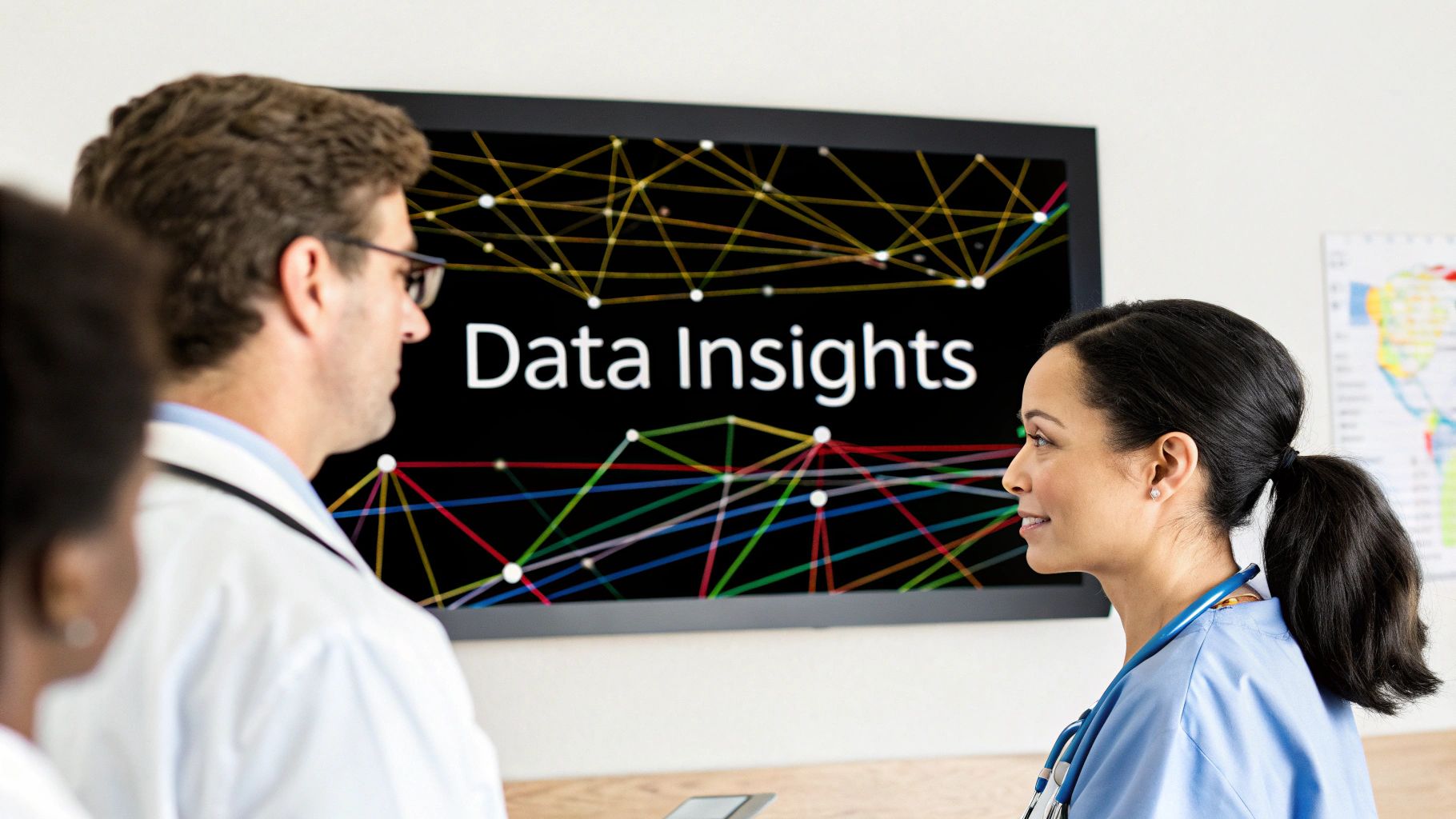
Artificial intelligence (AI) is rapidly changing the face of medical diagnostics. This section explains how these systems transform raw medical data into actionable insights, helping clinicians make more informed decisions. Understanding the underlying mechanics of AI diagnostics is essential to appreciating its full potential.
Unpacking The Algorithms: Machine Learning and Deep Learning
Two powerful techniques form the core of AI diagnostics: machine learning and deep learning. Machine learning algorithms learn from existing data, identifying patterns and making predictions without specific programming instructions. For instance, after training on thousands of medical images, a machine learning model can recognize conditions like tumors or fractures.
Deep learning, a specialized area within machine learning, uses artificial neural networks with multiple layers for more complex data analysis. This allows for the detection of subtle patterns often missed by the human eye.
Convolutional Neural Networks: Deciphering Medical Images
Convolutional neural networks (CNNs) are a key deep learning architecture used in AI diagnostics. CNNs excel at image analysis, making them invaluable for interpreting medical scans. Imagine a CNN meticulously examining a photograph, identifying key features and patterns to understand the scene.
Similarly, CNNs analyze medical images, identifying textures, shapes, and anomalies to assist in diagnosis. This detailed analysis helps clinicians identify potential issues that might otherwise be overlooked.
Natural Language Processing: Extracting Meaning From Text
Beyond images, natural language processing (NLP) enables AI systems to understand and extract meaning from text. This capability is crucial for analyzing patient records, clinical notes, and research papers. NLP can pinpoint key terms, relationships between concepts, and even the sentiment expressed in text.
By quickly synthesizing vast amounts of information, AI provides clinicians with valuable insights, saving them time and potentially uncovering critical details.
Ensemble Methods: The Power of Collaboration
To further enhance diagnostic accuracy, AI systems frequently use ensemble methods. This involves combining the predictions of multiple algorithms, similar to a team of medical specialists collaborating on a difficult case. Each algorithm contributes unique strengths, leading to a more robust and accurate diagnosis.
Combining a CNN focusing on image features with an NLP model interpreting clinical notes can provide a more complete picture of a patient's condition.
The Human-AI Partnership: Augmenting Clinical Expertise
It's important to understand that AI diagnostics are designed to enhance, not replace, clinicians. These systems are powerful tools that augment human expertise. While machines excel at processing large datasets and identifying patterns, human clinicians bring critical thinking, empathy, and the ability to consider individual patient contexts.
The true power of AI in diagnostics lies in this synergy, combining the strengths of both humans and machines to achieve the best possible patient outcomes. This partnership ensures that AI insights are interpreted and applied with the nuanced understanding that only a human clinician can provide. For example, IBM's Watson assists in healthcare by analyzing medical literature and patient data, identifying potential diagnoses, and predicting disease progression. This has been demonstrated by its role in identifying proteins associated with amyotrophic lateral sclerosis. You can explore this topic further.
Transforming Specialties: Where Artificial Intelligence Diagnostics Shines
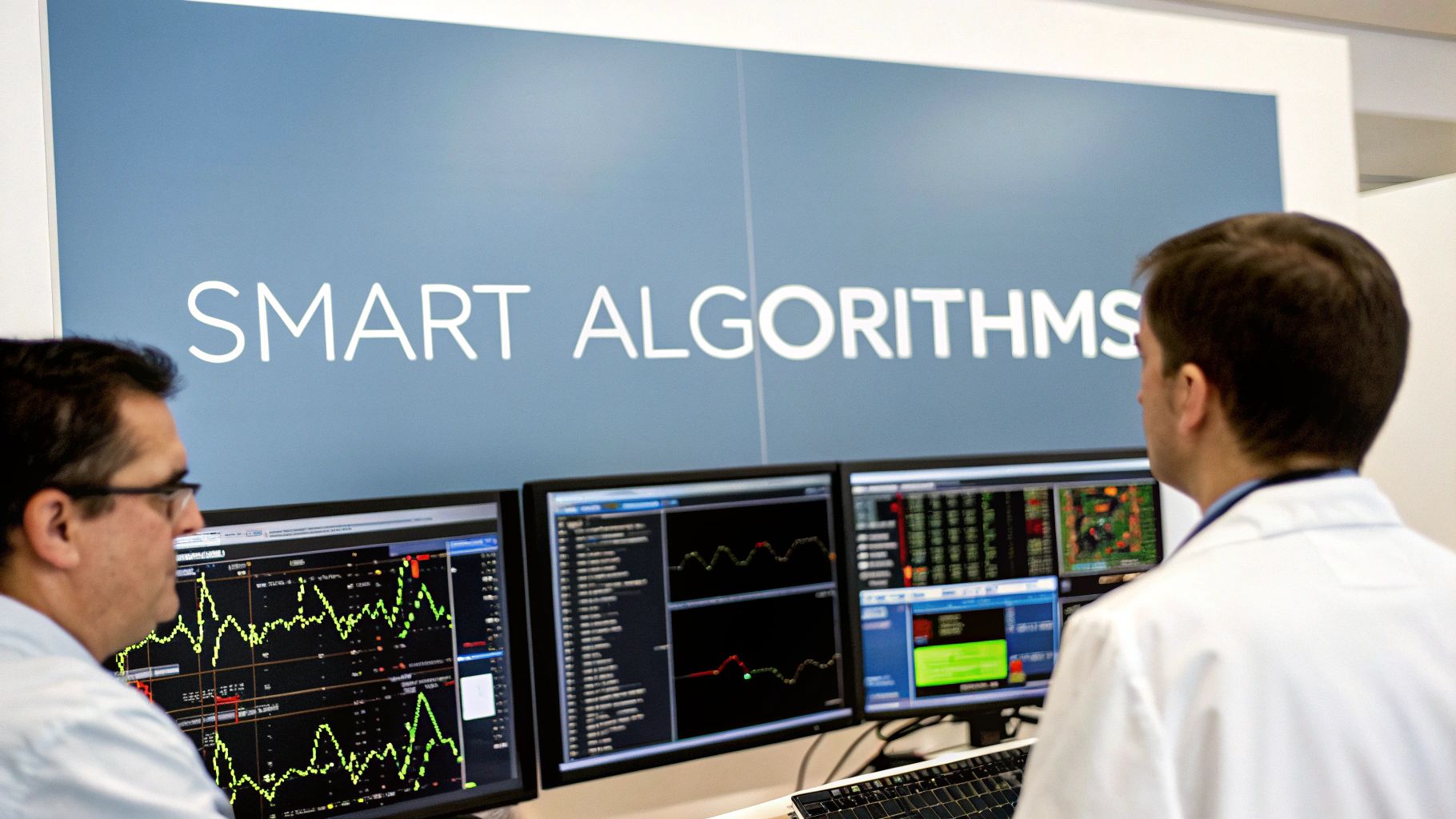
Artificial intelligence is significantly impacting medical diagnostics across various specialties. This impact is not just theoretical; it's producing real, tangible improvements in patient care and physician workflows. Let's explore how AI is reshaping medical practices.
Radiology: Enhanced Image Analysis
In radiology, artificial intelligence algorithms are proving exceptionally adept at identifying subtle anomalies that might be missed by the human eye. These algorithms can detect tiny fractures or early-stage tumors in medical images with impressive precision.
This enhanced accuracy leads to earlier diagnoses and interventions, which are critical for effective treatment and better patient outcomes. Early detection can drastically improve the chances of successful treatment.
Pathology: Quantifying Cancer Biomarkers
Computational pathology, an AI-driven field, offers significant advantages to pathologists. This technology enables faster and more accurate quantification of cancer biomarkers compared to traditional methods.
AI can analyze tissue samples, identifying and measuring specific proteins or genetic mutations. This information is essential for guiding treatment decisions and predicting patient prognosis, leading to more personalized cancer therapies and improved treatment monitoring.
Dermatology: Improved Skin Condition Identification
Artificial intelligence is making remarkable strides in dermatology. Computer vision algorithms are now used to identify skin conditions across diverse ethnicities with increased accuracy. This advancement addresses a limitation of traditional methods, which can be less effective in diagnosing skin conditions in individuals with darker skin tones.
AI's ability to learn from extensive datasets of diverse skin images significantly enhances diagnostic accuracy for all patients. This technology holds immense potential for early detection of skin cancer and other serious skin conditions.
Cardiology: More Accurate and Efficient Diagnosis
Cardiology is another field benefiting greatly from AI. Algorithms can analyze electrocardiograms (ECGs) and other cardiac data to detect abnormalities with both speed and precision.
This rapid and accurate diagnosis allows for faster intervention in critical situations like heart attacks. Moreover, AI can predict the likelihood of future cardiac events, enabling proactive preventative measures.
Transforming Workflows and Improving Patient Care
The increased speed, consistency, and accessibility of AI-powered diagnostics are transforming clinical workflows. By automating tasks like image analysis and data processing, AI frees up clinicians to focus on patient care.
This allows physicians to dedicate more time to interacting with patients, explaining diagnoses, and creating personalized treatment plans. This strengthens the doctor-patient relationship and builds trust. Additionally, AI can bring specialized diagnostic expertise to areas lacking access to specialists, thus promoting healthcare equity.
The table below provides a more detailed look at the applications and benefits of AI across these medical specialties.
To illustrate the advancements of AI in medical diagnostics, the following table compares several key applications across different medical specialties. It showcases the diagnostic accuracy achieved and the resulting clinical benefits, along with the current implementation status of these technologies.
| Medical Specialty | AI Application | Diagnostic Accuracy | Clinical Benefits | Implementation Status |
|---|---|---|---|---|
| Radiology | Fracture and Tumor Detection | Up to 95% depending on the specific application | Earlier diagnosis, reduced misdiagnosis rates, improved surgical planning | Widely adopted in research and increasingly integrated into clinical practice |
| Pathology | Biomarker Quantification | Can be >99% for specific markers | Personalized treatment selection, improved prognosis prediction, more efficient drug development | Growing adoption in research and clinical trials, with increasing integration into routine pathology workflows |
| Dermatology | Skin Condition Identification | Ranges from 70-95% depending on the condition and algorithm | Improved diagnostic accuracy across diverse ethnicities, earlier skin cancer detection, personalized treatment recommendations | Emerging clinical applications, with several FDA-approved AI-powered diagnostic tools available |
| Cardiology | ECG Analysis and Risk Prediction | Varies depending on the specific application, generally high accuracy for arrhythmia detection | Faster and more accurate diagnosis of heart conditions, improved risk stratification for preventative care, enhanced monitoring of patients with chronic heart disease | Increasing integration into cardiology workflows, particularly for ECG interpretation and remote patient monitoring |
As this table demonstrates, AI diagnostic tools offer the potential to significantly improve healthcare delivery across a range of medical specialties. While the implementation status varies, the advancements continue to accelerate, promising better patient outcomes and more efficient healthcare systems.
The continued development of AI in diagnostics promises to further revolutionize healthcare and improve patient outcomes globally.
Breaking Down Barriers: Artificial Intelligence Diagnostics Beyond Hospital Walls

The most impactful advancements in artificial intelligence diagnostics are extending beyond the walls of traditional medical centers. These advancements are reaching patients directly, whether they're at home or in their local communities. This shift is making specialized diagnostic expertise more accessible and convenient, effectively democratizing healthcare.
Smartphone-Based Diagnostics: Ophthalmology In Rural Communities
Consider the impact of smartphone-based diagnostic tools. These tools are bringing ophthalmology screening to rural communities where access to specialists is often limited. Patients can use a smartphone app to capture images of their eyes. These images are then analyzed by an AI algorithm, which can detect signs of diseases like diabetic retinopathy. This early detection is crucial for timely treatment and preventing vision loss.
Wearable Sensors and AI: Continuous Cardiac Monitoring
Wearable sensors, combined with the power of AI algorithms, are revolutionizing cardiac care. These sensors allow for continuous cardiac monitoring at home, tracking vital signs like heart rate and rhythm. The data is transmitted to an AI system for analysis, allowing for the detection of irregularities that might be missed during infrequent doctor visits. This can lead to faster interventions in emergencies.
Telehealth Platforms and Diagnostic AI: Transforming Underserved Regions
Telehealth platforms, enhanced by diagnostic AI, are transforming healthcare delivery in underserved regions. These platforms connect patients with doctors remotely for consultations and diagnostic assessments. AI algorithms analyze patient data shared during telehealth visits, assisting doctors in making accurate diagnoses and developing effective treatment recommendations.
This trend toward AI-assisted diagnostics has had a significant impact on telemedicine and remote healthcare delivery. AI systems can analyze patient data remotely, providing valuable insights to healthcare professionals. This capability proved particularly useful during recent global health crises, enabling better resource management and prioritization of patient care.
AI-driven platforms like XSOLIS’ CORTEX are being used in utilization review processes. These platforms leverage natural language processing and machine learning to extract insights from electronic medical records. This streamlines administrative tasks and ensures effective patient care management. More detailed statistics can be found here.
Empowering Patients and Improving Outcomes
The combination of AI diagnostics and readily available technology is leading to significant improvements in early detection, treatment adherence, and patient empowerment. When patients can actively participate in their own health management, they become more engaged and informed.
Increased access to diagnostics enables timely interventions. Early detection of conditions through AI-powered tools leads to earlier treatment and, ultimately, better outcomes. These advancements are bridging geographic, economic, and accessibility gaps. By bringing diagnostic tools directly to patients, regardless of location or financial situation, AI is making healthcare more equitable and accessible. By 2030, AI is projected to play a key role in connecting healthcare systems globally, improving predictive care, and significantly enhancing patient outcomes.
Navigating the Challenges of Artificial Intelligence Diagnostics
Artificial intelligence diagnostics offers incredible potential for reshaping healthcare. However, this progress comes with significant challenges that demand careful attention. Successfully addressing these hurdles is essential for responsibly and effectively integrating AI into medical practices.
Algorithmic Bias: Ensuring Equity in AI Performance
One key concern is algorithmic bias. AI algorithms learn from data. If that data reflects existing societal biases, the algorithm might perpetuate or even worsen these disparities. This can result in unequal diagnostic accuracy across different patient groups.
For example, an AI system trained primarily on images from a single demographic group may be less accurate when analyzing images from individuals of different ethnicities or backgrounds. Addressing algorithmic bias requires careful data curation and consistent monitoring of AI performance across diverse groups.
Leading organizations are actively developing mitigation strategies, including techniques for debiasing data and algorithms, to ensure equitable access to high-quality AI diagnostics.
Regulatory Landscape: Navigating a Complex Terrain
The regulatory landscape surrounding AI medical devices presents another significant challenge. Regulations must strike a balance between fostering innovation and safeguarding patient safety. The approval process for AI diagnostic tools can be complex and time-consuming.
Furthermore, the constant evolution of AI systems means regulatory frameworks must be adaptable. This necessitates ongoing dialogue between regulators, developers, and clinicians to establish clear and effective guidelines that promote both safety and innovation.
Customer support and its automation also pose challenges for AI diagnostics. For insights into streamlining these processes, explore resources on how to automate customer support.
Validation and Generalizability: Adapting to Diverse Settings
Validating AI systems across different clinical settings is another hurdle. An AI model that performs well in a controlled research environment may not be as effective in a real-world clinical setting with its inherent variability.
This introduces the challenge of generalizability: ensuring AI systems reliably perform across diverse patient populations, medical equipment, and clinical workflows. Robust validation strategies, including real-world testing in varied environments, are crucial for ensuring AI diagnostic tools consistently deliver accurate and dependable results.
Ethical Considerations: Transparency and Informed Consent
Ethical considerations, especially those concerning informed consent and explainability, require careful attention. Patients deserve to understand how an AI system arrived at a diagnosis.
However, many current AI algorithms are “black boxes,” meaning their decision-making processes are opaque. This lack of transparency raises concerns about patient autonomy and trust.
Ongoing efforts to develop more explainable AI aim to make AI recommendations more transparent and understandable for both patients and clinicians. Addressing these ethical considerations is crucial for building public trust and ensuring the responsible implementation of AI in healthcare. For example, research indicates some AI systems in medical imaging achieve accuracy rates of up to 95%, highlighting AI's potential to revolutionize medical diagnostics.
The Path Forward: Collaboration and Continuous Improvement
Overcoming these challenges demands a collaborative approach. Researchers, clinicians, regulators, and ethicists must work together to develop strategies for responsible AI development and implementation.
This includes continued research to improve AI algorithms, robust validation processes, clear regulatory guidelines, and open discussions about ethical implications. By acknowledging and actively addressing these challenges, we can unlock the full potential of AI diagnostics and transform healthcare.
The Next Frontier: Where Artificial Intelligence Diagnostics Is Heading
Artificial intelligence diagnostics is evolving rapidly, promising exciting new developments that could reshape healthcare delivery. These changes aren't just incremental improvements to existing tools, but a fundamental shift in how we approach patient care.
Federated Learning: Protecting Privacy, Enhancing Collaboration
One promising area is federated learning. This technique allows AI models to train on data from many sources without the data ever leaving its original location. This is vital for protecting patient privacy, a primary concern in healthcare. Imagine several hospitals wanting to train an AI model to detect a rare disease. Federated learning lets each hospital contribute data without sharing sensitive patient information. This collaborative approach creates more robust and accurate AI models, benefiting everyone.
Multimodal Systems: Personalized Medicine Through Data Integration
Another significant advancement is the development of multimodal systems. These systems integrate different data types—genomic information, clinical records, and medical images—to create a comprehensive view of a patient's health. This integrated approach is critical for personalized medicine. Consider a patient with a complex medical history. A multimodal system can analyze their genetic predisposition to diseases, past records, and current scans to generate a truly personalized risk assessment and treatment plan. This moves us toward medical care tailored to individual needs.
Ambient Intelligence: Seamless Diagnostics in Clinical Workflows
Ambient intelligence is creating diagnostic tools that seamlessly integrate into clinical workflows. These tools operate in the background, collecting and analyzing data without disrupting patient care. Imagine smart sensors in hospital rooms monitoring vital signs and alerting staff to changes, or wearables tracking patient activity and sleep to provide early warnings of potential problems. These unobtrusive tools enhance clinical care's efficiency and effectiveness.
Explainable AI: Building Trust Through Transparency
As AI integrates further into healthcare, the need for explainable AI grows. These systems clearly explain their diagnostic recommendations, building trust with patients and clinicians. Imagine an AI system flagging a potential tumor on a scan. An explainable AI system would not only highlight the area but also explain the specific image features that led to its assessment. This transparency makes the AI's decision-making understandable, increasing confidence in its recommendations.
Edge Computing: Bringing AI to Resource-Limited Settings
Edge computing brings the power of AI diagnostics to resource-limited environments. By processing data locally on devices like smartphones or portable diagnostic tools, edge computing removes the need for constant internet access. This makes AI-powered diagnostics accessible in remote areas or places with limited infrastructure. Consider a mobile health clinic in a developing country. With edge computing, healthcare workers can use portable tools with AI to analyze blood samples or perform ultrasounds, even offline. This delivers advanced diagnostics where they're needed most.
Ready to experience the future of medical imaging? PYCAD offers a suite of AI solutions for medical device manufacturers, healthcare technology companies, and researchers. From data handling and model training to deployment and support, PYCAD helps you integrate AI into medical devices, improving diagnostic accuracy and operational efficiency. Visit PYCAD today to learn more.



